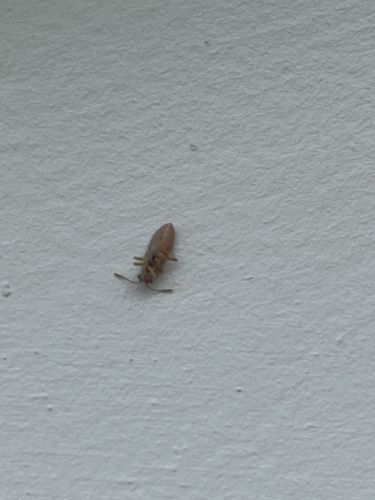Booklouse / Psocid
Scientific Name: There are many species; examples include Liposcelis spp. (common booklice) or Psocus spp.
Order & Family: Order: Psocoptera (often now included in Psocodea); Family: Varies (e.g., Liposcelididae, Psocidae, etc., depending on species)
Size: Typically 1-2 mm, though some species can be up to 10 mm.

Natural Habitat
Booklice prefer damp, humid, and undisturbed environments. Indoors, they can be found in old books, stored papers, food pantries, under wallpaper, in attics, basements, and bathrooms. Outdoors, they live under bark, in leaf litter, bird nests, and other moist places.
Diet & Feeding
They feed on fungi, mold,lichen, microscopic plant matter, starch-based materials (like the paste in books or wallpaper), and other organic detritus.
Behavior Patterns
Psocids are typically nocturnal or crepuscular, though some can be active during the day. They are often found in groups. They undergo simple metamorphosis (hemimetabolous), meaning they hatch from eggs as nymphs that resemble miniature adults and gradually grow through several molts.
Risks & Benefits
Generally harmless to humans. They do not bite or transmit diseases. However, large infestations can be an annoyance and may cause damage to books, papers, stored food products, or botanical collections. Their presence often indicates high humidity or moisture issues in a building. They play a role in decomposition outdoors.
Identified on: 8/30/2025